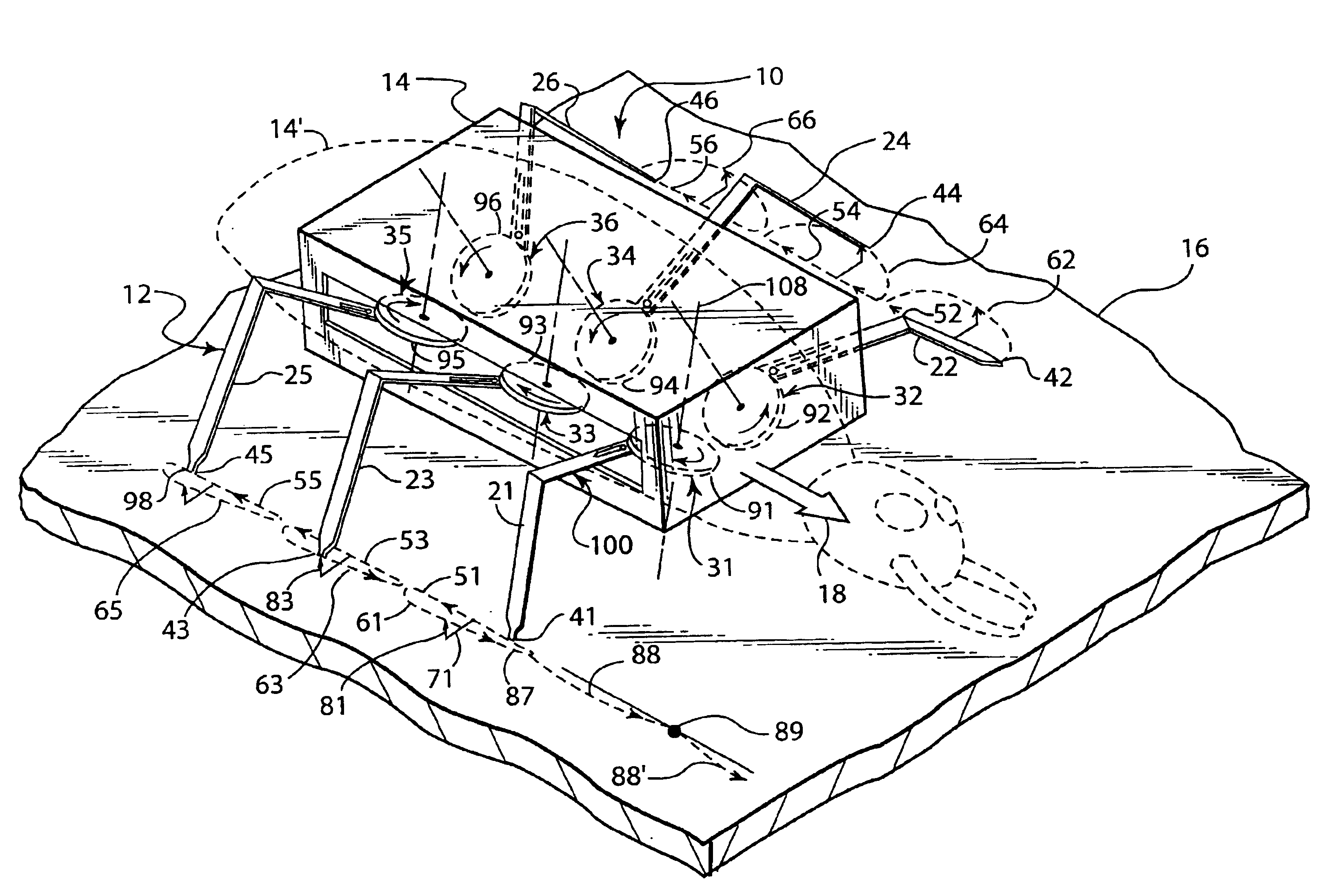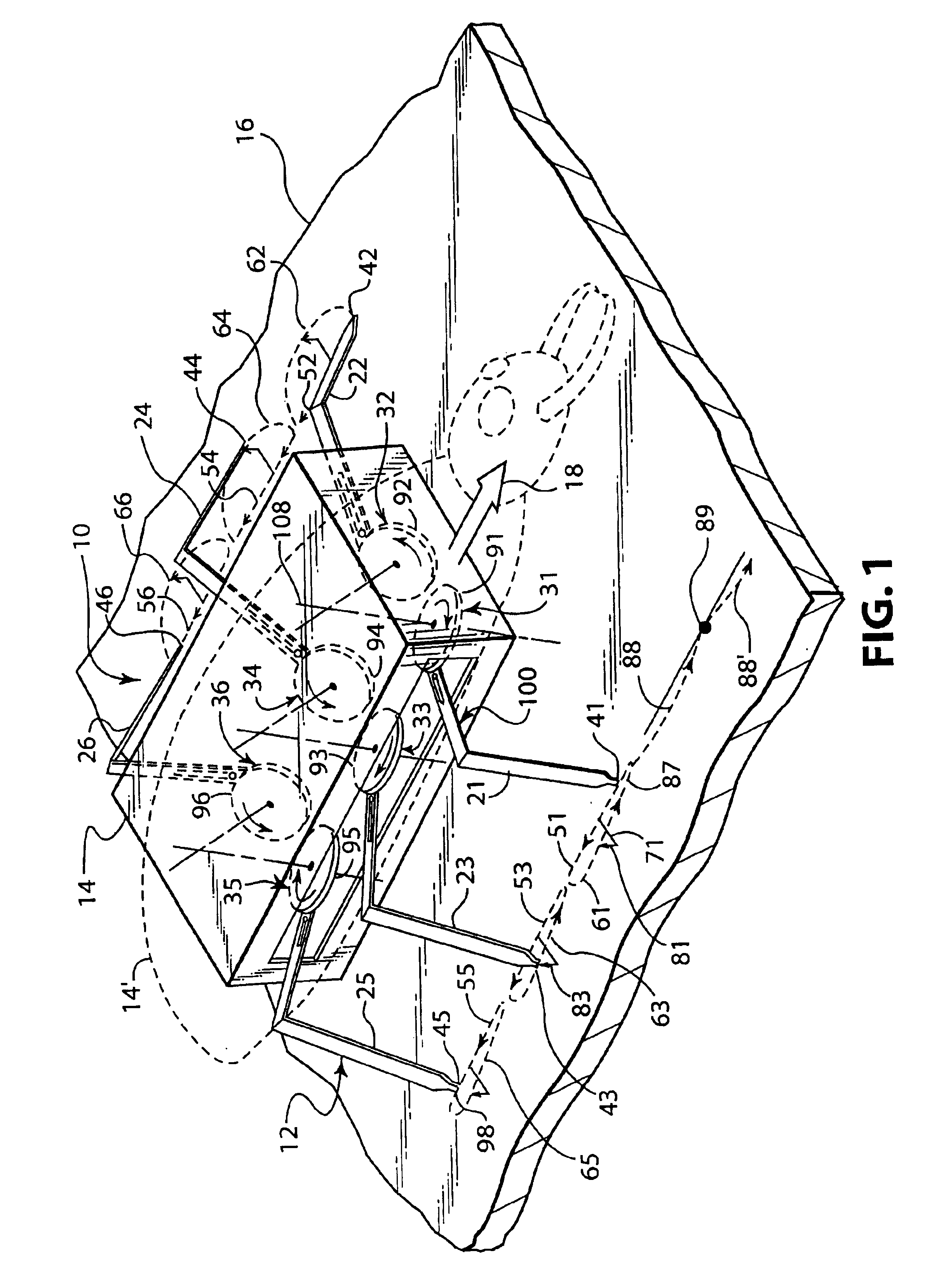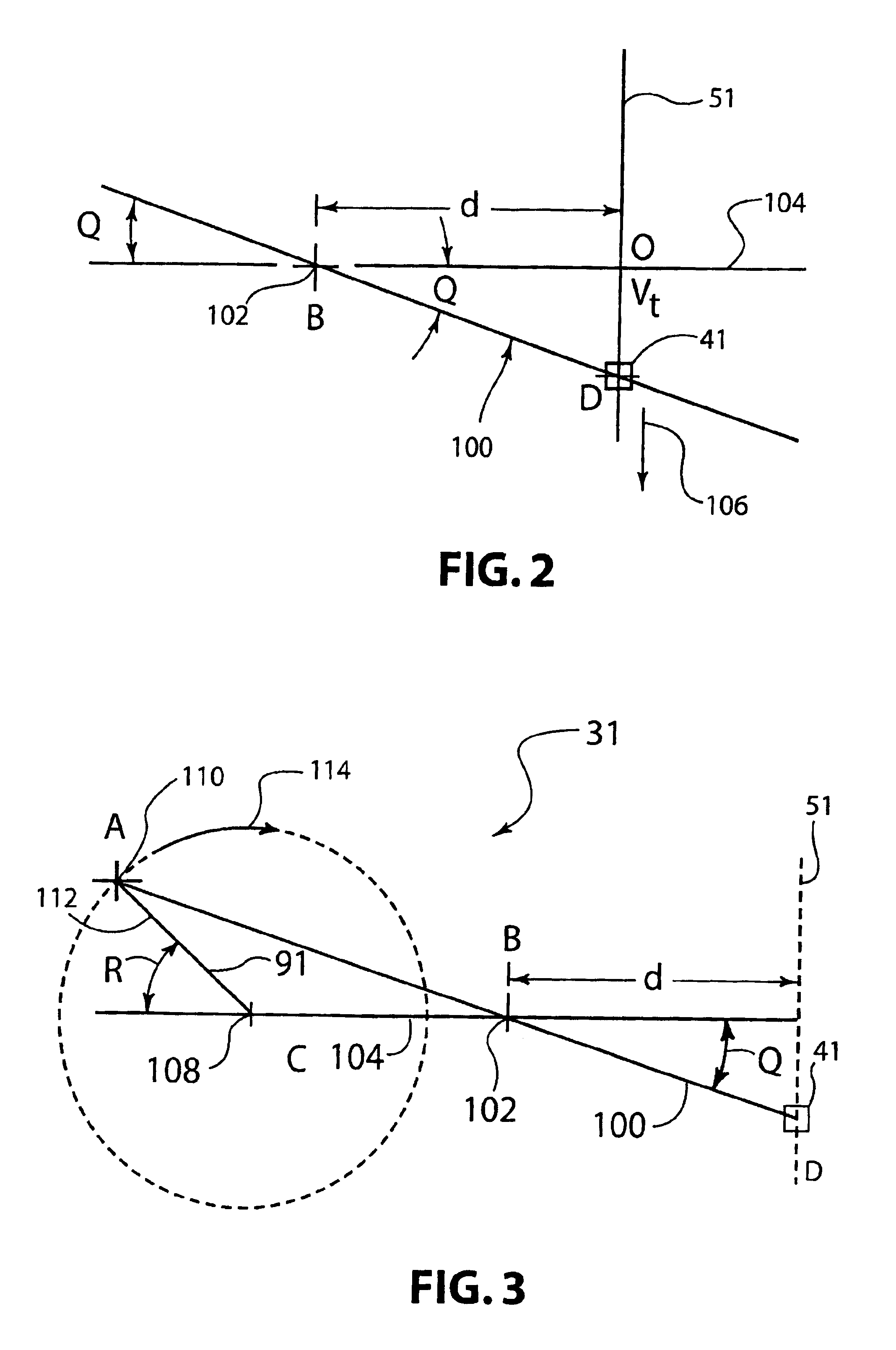Apparatus and method for producing ambulatory motion
a technology of apparatus and motion, applied in the direction of toys, dolls, remote-control toys, etc., can solve the problems of loss of traction, difficulty in achieving stable devices, and complex mechanical and control systems, and achieve good stability and control characteristics
- Summary
- Abstract
- Description
- Claims
- Application Information
AI Technical Summary
Benefits of technology
Problems solved by technology
Method used
Image
Examples
embodiment 12
In the example ambulatory leg system embodiment 12 shown in FIG. 1, the cyclic path of the foot 41, which is typical of the respective cyclic paths of the other feet 42, 43, 44, 45, 46, has its rectilinear path 51 of the stride stroke illustrated in phantom lines on the support surface 16. This view of the stride stroke 51 is accurate when viewing the path of the stride stroke 51 in relation to the body 14. Also, the step stroke.61 in the example embodiment of FIG. 1, when viewed in relation to the body 14, moves the foot 41 in the arcuate path of the step stroke 61, which extends outwardly 71 and upwardly 81 in relation to the body 14. However, because the body 14 is propelled forwardly, as indicated by the arrow 18, when the feet 41, 42, 43, 44, 45, 46 are driven in the respective stride strokes 51, 52, 53, 54, 55, 56, as shown in FIG. 1, the apparent depiction of the stride strokes 51, 52, 53, 54, 55, 56 as straight lines having lengths on the support surface 16 is not really acc...
embodiment 10
Also, as mentioned above, for stability, it is preferred that several of the feet 41, 42, 43, 44, 45, 46—at least two on one side of the body 14 and at least one on the other side of the body 14—be somewhere in their respective stride strokes at the same time so that at least three feet are supporting the object 10 on the surface 16 in a tripod (triangle) relationship to each other at any particular instant in time. Therefore, while each leg strut 21, 22, 23, 24, 25, 26 of the example embodiment shown in FIG. 1 is driven with its own respective crank-type drive mechanism 31, 32, 33, 34, 35, 36, as will be described in more detail below, some phase coordination among them is preferred for such stability purposes. For one example, as illustrated in FIG. 1, on the right side of the object 10, the right front foot 41 is planted at a spot 87 on the surface 16 and is just beginning its stride stroke 51 as the right rear foot 45 is also planted at a spot 98 on the surface 16, but nearing t...
embodiment 160
A modified 4-legged device 160 equipped with two additional faux legs 155, 156 connected by a pivotal cross axle 157 is shown in FIGS. 29-33. This embodiment 160 can move straight forward rapidly and smoothly and turn in reverse without tipping on a reasonably smooth support surface. When the device 160 moves forwardly, the two faux legs 155, 156 drag lightly and do not interfere with the normal stride 158 and stepping 159 strokes of the four legs 151, 152, 153, 154. However, when the four legs 151, 152, 153, 154 are operated in reverse, the right side faux leg 155, which is longer than the left side faux leg 156 and longer than the regular legs 151, 152, 153, 154, engages the support surface and raises the right side of the device 160 enough to lift the right legs 151, 153 off the support surface, thereby becoming a pivot point about which the surface engaging legs will turn the device 160.
As best seen in FIG. 30, the two faux legs 155, 156 are connected by the axle 157, which exte...
PUM
 Login to View More
Login to View More Abstract
Description
Claims
Application Information
 Login to View More
Login to View More - R&D
- Intellectual Property
- Life Sciences
- Materials
- Tech Scout
- Unparalleled Data Quality
- Higher Quality Content
- 60% Fewer Hallucinations
Browse by: Latest US Patents, China's latest patents, Technical Efficacy Thesaurus, Application Domain, Technology Topic, Popular Technical Reports.
© 2025 PatSnap. All rights reserved.Legal|Privacy policy|Modern Slavery Act Transparency Statement|Sitemap|About US| Contact US: help@patsnap.com



